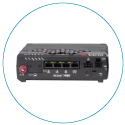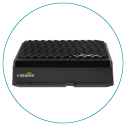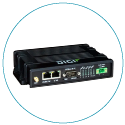Why Now is the Time for an Agile Wireless Network
Agile Wireless Networks Can Quickly Spin Up & Down Deployments, Move Faster, Have Full Visibility & Scale Data Usage at Any Time
Wireless networks are now conditioned to keep pace with the speed at which cloud, mobile devices, and the Internet of Things (IoT) technologies are evolving — and the way businesses now operate. Today’s organizations require networks — and connected devices — to be easily manageable, deployable, and maintainable. Instead of having to manually manage each device on the network separately, with an agile wireless network, IT teams can manage networks at an exceptional scale and obtain visibility from a single screen.

The 2018 Gartner Magic Quadrant for Data Center Networking explains that, “As enterprises scale digital business initiatives, they must balance refreshing equipment and expanding capacity, while improving agility and maintaining uptime in their data center networks.”
The following examples are ways organizations can improve the agility of their networks as the networking landscape evolves.
Operational Ease
Agile IT departments are finding ways to save time and resources while adding new applications and deployments. For example, day-1 Internet is an on-demand style of connectivity with a painless deployment process and little to no cost to install the network. It also provides the option to relocate the network quickly and easily or open a new location with minimal advance notice.
This makes wireless networking and software-defined networking (SDN) invaluable when networks need to be spun up and down quickly and easily, such as pop-up networks. Often wired connectivity has a lengthy installation time and is difficult to relocate. Pop-up networks allow a business to deploy an Internet connection before the network infrastructure has been developed within the business. Situations like this are a perfect opportunity for a wireless solution, offering day-1 deployment, a reliable connection, and bypassing installation delays.
Pop-up networks also allow businesses to utilize a wireless network while the wired network is being installed. One unique example is the opportunity for stores that are still in the process of opening to spin up instant networks for technologies like interactive kiosks outside the doors. People passing by can enter their email addresses into the kiosks to receive notification for when the store will open, and even shop from the store’s online catalog resulting in an overall profit and relationship with customers before they even open the doors.
Security
A secure network also increases wireless network agility by delivering organizations with the confidence to pop-up a network when needed and carry out business operations — like credit card transactions where sensitive data is involved.
To ensure a secure network, organizations leverage Software-Defined Perimeter (SD-Perimeter) technology to strengthen network security by segmenting traffic into a perimeter-secured overlay network. Data is protected, and the rest of the network is secure from breaches that could occur through IoT devices.
Moving to the Cloud
Cloud networking provides centralized management, device and application visibility, real-time web-based diagnostics, reporting, and control. These benefits provide more agility by making a company savvier within their networking architecture. Organizations can scale IT infrastructure resources both up and down to meet unpredictable usage requirements, while also saving time with instant updates from one location.
Cloud management offers zero-touch deployment to remotely deploy and manage all the devices on a business’s network without the need for on-site IT staff. Cloud management also provides instant insights to WAN/LAN analytics and visibility to manage data usage, performance, and costs. NetCloud Manager is Cradlepoint’s network management service within the NetCloud platform.
Adapting to the Pace of Technology Advancements
As 5G becomes available — and IoT more prevalent — there will be a reliance on connections to 4G LTE to ensure continuous coverage. 5G won’t replace LTE; it will continue to evolve along with LTE — and the two will work together to handle different types of traffic most efficiently. 5G will allow for higher bandwidth, lower latency, and more favorable data plans. Organizations that want to take advantage of these benefits will need to evolve from legacy WANs to an agile wireless network.
Organizations will want to develop a clear picture of how 5G fits within their existing technology and business roadmaps and how it will impact the network design. An agile wireless network will help to seamlessly transfer networks to LTE and 5G and better embrace IoT.
Share this Post












